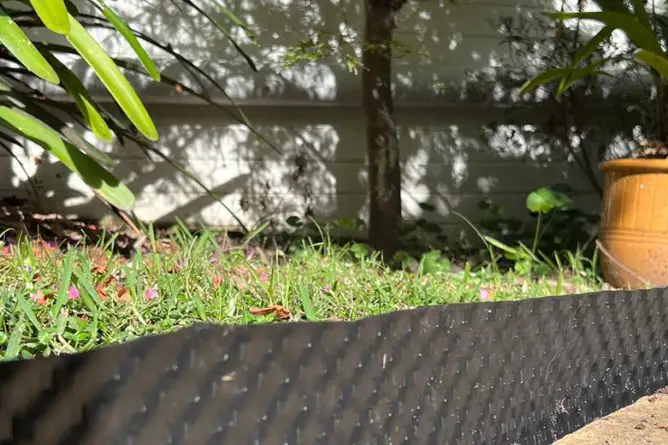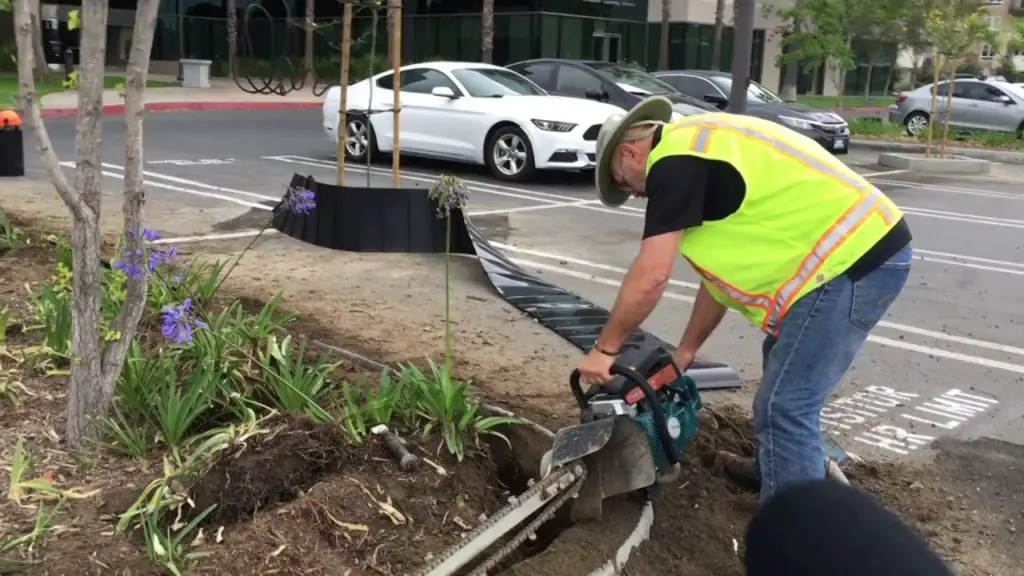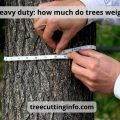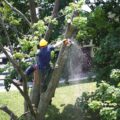You don’t want to see your hardscape installation get destroyed after all the effort you put into installing it. It’s especially frustrating when the damage could have been prevented. How to install root barrier?
They are an ideal addition to an overall hardscape design. They offer shade to trees, most people, and even structures. Also, they look attractive.
The benefits of trees are numerous for landscaping, planting, and hardscape designs. But, they can also be an enormous threat.
The roots of trees that aren’t properly controlled may cause damage to elements of hardscape such as sidewalks, irrigation, and lighting. It is possible to remove fountains and benches that are, which are integrated into the landscaping. This could have been prevented by proper planning, foresight and management, and attention.
Tree root systems are often larger than the trunk and branches of the tree. The majority of a tree’s roots are within the top 6–12 inches (15-30 cm) of soil, though some extent much farther down. Trees with deep root systems can access more water during drought periods, making them more resilient to dry spells than those with shallow roots.
How a Root Barrier Can Protect Your Home and Garden
A root barrier stops tree roots from spreading and causing damage. There are physical and chemical types of tree root barriers. Chemical barriers destroy roots and plants. We suggest using a physical barrier instead.
A physical root barrier redirects roots without harming trees or bamboo. An HDPE barrier, made of density polyethylene, acts as a waterproof seal. It prevents soil moisture loss and protects foundations, pipes, and pavements from damage.
Tree roots can grow up to three times the size of the canopy in diameter and can travel distances up to 4 times longer than the branches, giving them a far-reaching impact on hardscape elements.
Protect your property from root damage with a root barrier
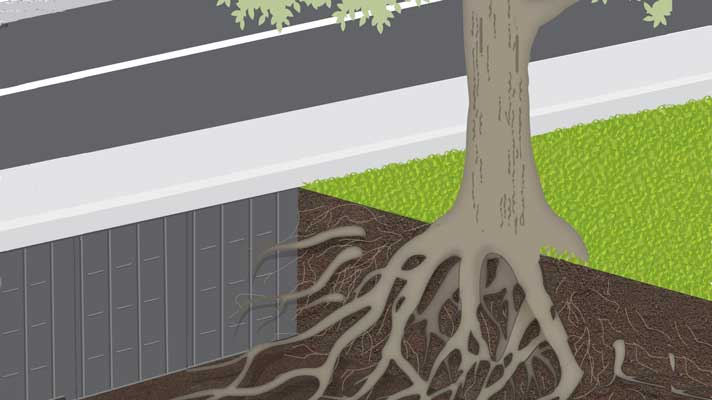
Installing or creating a root barrier has benefits. It protects plants and prevents trip-and-fall accidents in yards, driveways, and sidewalks. Root barriers stop roots from invading garden soil and taking away moisture from plants. If your plants aren’t growing well, but the oak tree in your backyard looks healthy, check underneath the trunk for soil. If roots are replacing your beetroot, it’s time to install a barrier.
Root barriers can provide more enough space and a harmonious environment for plants. However, they can also be a safety concern depending on the location of the tree. For instance, roots under sidewalks can create tripping hazards in public spaces. If the tree is on your property, tree barriers can prevent damage to yards, driveways, and foundations.
According to experts, the roots of trees can extend two to three times as far from the tree trunk as its highest branches. This means that the roots may grow far beyond the area occupied by hardscapes and potentially cause damage if not managed properly.
Maximize your garden’s health: Get the guide to installing root barriers
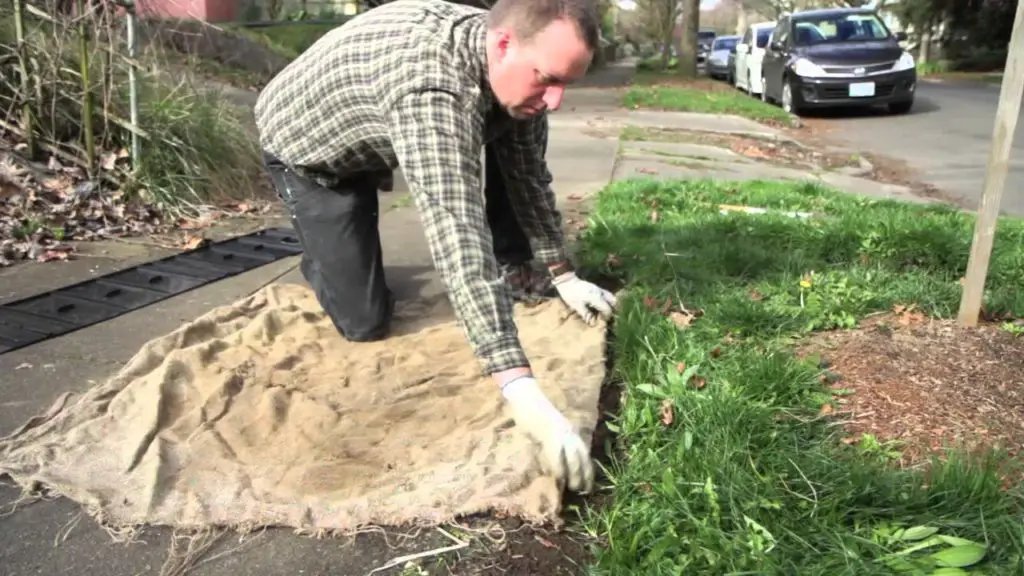
Can provide more space and a harmonious environment for plants. However, they can also be a safety concern depending on the location of the tree. For instance, roots under sidewalks can create tripping hazards in public spaces. If the tree is on your property, barriers can prevent damage to yards, driveways, and foundations.
Root barriers can also reduce the risk of subsidence caused by soil movement due. Subsidence occurs when the soil supporting a structure settles or sinks, leading to structural damage and potentially even collapse. This is particularly an issue for buildings situated near large trees, which have expansive root systems that can weaken the soil beneath them.
How to Design a Secure Area: Linear Barrier vs. Surrounding
The barrier is installed either linearly or enclosed. The linear installation is ideal for trees that are planted close to concrete curbs and sidewalks. This allows you to place barriers on either opposite side without the possibility of damaging the foundation.
Root barrier installation for new trees
When planting a new tree root, it is best to install a barrier. This allows the roots to grow in the direction you choose. For more detailed instructions on how to install a root barrier, refer to the step-by-step guide.
- Plan & Measure. To determine the number of panels required for the barrier, follow these steps. First, measure the trunk’s diameter and multiply by three, rounding it up. Next, measure the length of the barrier and divide it by the panel width. This calculation will provide the number of panels required.
- Get to digging. To install a tree root, dig a trench. The depth should be 24″ – 36″, minus 1 inch (2.54 cm) if catching surface roots. The width of the trench should be 3–4 inches.
- Install Your Barrier. Install each of the panels of the tree root barrier installation into the trench. Make sure it is 2 inches (ca. 5 cm) higher than the ground. Change the dirt in alternately one-third dirt, water, and dirt, repeating this process until the trench has been filled at the level of the earth.
Barriers are not just for new tree root barrier; they can also be used to protect existing trees from damage and disease. Barriers have been proven to help prevent girdling roots, a condition where the tree’s roots can become wrapped around each other, leading to reduced nutrient and water uptake by the root.
Step-by-Step Guide to Installing a Root Barrier
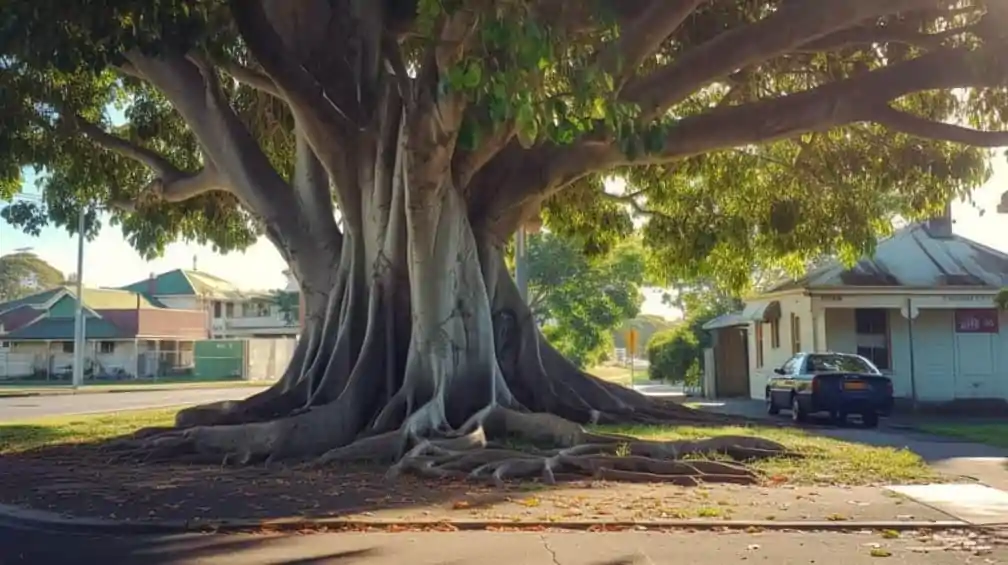
The installation of a root barrier could be an easy process, however, it requires meticulous planning and a keen eye for detail. The basic procedures required:

Step 1: The size and the location of the root barrier. Before you start installing a root fence, it is crucial to decide the dimensions and position of the wall. The width of the wall will be determined by the size of the tree, as well as the depth of the root system. A typical root barrier should be at least 1.5 times the width of the canopy, or at the very least, it should cover all the TPZ. However, it might require more for trees with larger diameters.
The position of the barrier to the root is vital. The barrier should be placed in between the tree and all infrastructures or utilities need to be protected. Furthermore, it is recommended that the barrier be placed far enough from the tree which allows for roots to expand without becoming too restricted.
Step 2: Make the trench to create the root blockage. Once you’ve established the area and size for the barrier, it is necessary to create an area around the circumference of the plant. The trench must be at least one meter in depth and 30 cm wide, and it should be dug straight downwards for vertical construction of the fence.

Step 3: Set up the barrier for the root. After the trench is dug, it is time to begin setting up the barrier to root. The barrier must be constructed out of a strong material like high-density polyethylene, and it should be at a minimum of 60 centimeters deep. The barrier is to be placed horizontally in the trench, and at least 10 cm of the barrier is over the ground. It should be covered at the edges to create a seamless barrier.
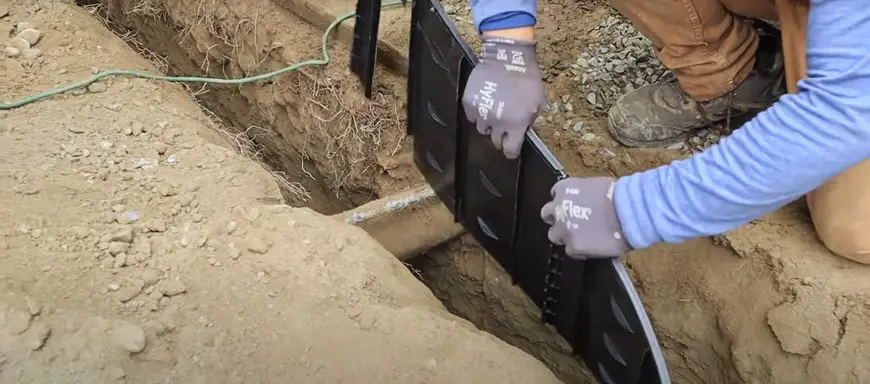
Step 4: Fill the trench. Once the root barrier is constructed, the trench needs to be filled with soil. The soil must be compacted down in order to guarantee a secure establishment of the barriers.

Step 5: Check the growth of your tree. Following the installation of a root barrier, it is crucial to observe the tree’s expansion and overall general health. The barrier must not stop the root system and should rather direct root systems away from the property. Monitoring regularly can ensure that the tree stays in good health and that your barrier is working properly.
Special considerations for bamboo barriers
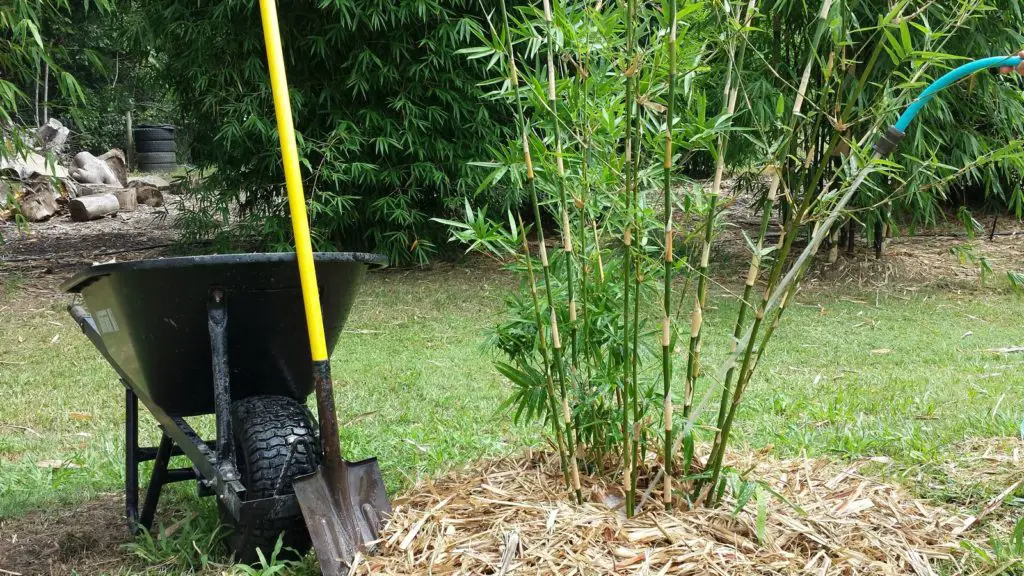
Containing bamboo is crucial due to its rapid growth rate. To keep growth and prevent it from spreading and causing damage, installing a bamboo barrier is necessary. This process is similar to installing a tree barrier, with the main difference being the measurements involved.
HDPE is a type of plastic that is strong, durable, and resilient. It has many uses in the construction industry, from water pipes to fence posts and bamboo barriers. It is also used to make bottles for drinks such as milk, juice, and soda.
For projects involving timber bamboo, it is recommended to use a custom-fabricated HDPE membrane liner. This liner is specifically engineered to withstand extended exposure to outdoor conditions. The versatility of HDPE allows it to be tailored to the size and specifications required, making it an ideal option for managing unruly bamboo plants.
The bamboo barrier can also be used to protect other plant roots, such as trees and shrubs, from encroaching on adjacent plants or buildings.
Final
Installing a barrier is an important step in preventing the roots of young trees from spreading to unwanted areas. By properly installing, you can create a physical barrier that blocks the growth of tree roots, directing them away from sensitive areas such as foundations, pipes, or sidewalks.
This helps to prevent potential damage and costly repairs in the future. With a barrier in place, you can have peace of mind knowing that your trees will grow in a controlled manner and not cause any harm to your desired landscape or structures.
FAQ How To Install Root Barrier
How deep should a root barrier be?
Once you have figured out exactly the depth and where you want to position the root blockage, you are able to create a hole. For most trees, the size is 36 inches (0.91 m) x 34 inches (0.86 m), and less than one millimeter for soil that is caught. It is recommended to be around 3–4 inches thick.

Do barriers really work?
Are roots able to be cut? Correctly placed tree roots barriers items can be installed to stop roots spread to structures. In this instance, it guarantees structural integrity to the building’s structure, while also protecting trees from harm.
How much does it cost to install a root barrier?
The cost of the products is a key consideration. Barriers must reach a maximum depth of two feet from your foundation to be effective. A 3-foot typically costs $65.00 per foot, with a maximum cost of $500.
What material is used for the root barrier?
The Root Barrier Sheets are made of HDPE sheets. These sheets protect pavement surfaces from water and tree root damage.

